Chained dogs suffer from stress and behavioral problems and are also more vulnerable to being attacked by other dogs
November is the month of Magusto – the traditional autumn festival –but from now on November will also go down in history as Month of Summits.
 Earlier on tens of thousands of visitors invaded the Altice Arena at the Web Summit and on the 24th and 25th at least 1500 dogs are expected to take possession of the LX factory in Lisbon at the Dog Summit (https://www.dogsummit.pt).
Earlier on tens of thousands of visitors invaded the Altice Arena at the Web Summit and on the 24th and 25th at least 1500 dogs are expected to take possession of the LX factory in Lisbon at the Dog Summit (https://www.dogsummit.pt).
![]() Their caretakers – with or without their four-legged friend – will be treated to numerous workshops and lectures on training, healthcare, nutrition, and wellbeing. Moreover, the vast exposition area will accommodate a great variety of start-ups and companies offering a large number of services and products to the beloved animals.
Their caretakers – with or without their four-legged friend – will be treated to numerous workshops and lectures on training, healthcare, nutrition, and wellbeing. Moreover, the vast exposition area will accommodate a great variety of start-ups and companies offering a large number of services and products to the beloved animals.
 ‘This project is a first in Portugal’, say Cristina Pena and João Brochado – the couple that organizes the event – in the newspaper Público. ‘We want to emphasize a positive approach in the rearing of dogs instead of an aversive approximation. We often come across training methods based on punishment and negative reinforcement, leading to aggressiveness and anxiety in the dog.’
‘This project is a first in Portugal’, say Cristina Pena and João Brochado – the couple that organizes the event – in the newspaper Público. ‘We want to emphasize a positive approach in the rearing of dogs instead of an aversive approximation. We often come across training methods based on punishment and negative reinforcement, leading to aggressiveness and anxiety in the dog.’
 Therefore, much attention will be given to training methods that respect the welfare of the animals. Except for renowned trainers from home and abroad, there will also be veterinarians and behavioralists among the speakers.
Therefore, much attention will be given to training methods that respect the welfare of the animals. Except for renowned trainers from home and abroad, there will also be veterinarians and behavioralists among the speakers.
![]() Animal protection associations – like the civic movement Unchain your Dog (http://www.quebraacorrente.pt) – will of course not be missing from the event.
Animal protection associations – like the civic movement Unchain your Dog (http://www.quebraacorrente.pt) – will of course not be missing from the event.
‘In the end, the one who has to be educated is the caretaker, not the dog.’
Bom fim de semana Enjoy the weekend


 The event – created to connect technology with industry – is the global stage for conducting business, recruiting talent and promoting brands.
The event – created to connect technology with industry – is the global stage for conducting business, recruiting talent and promoting brands.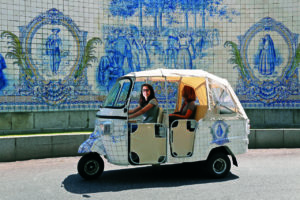 Since the two previous editions yielded 300 million euro annually on accommodation and transport, government persuaded the organization to maintain the Websummit in Lisbon over the next ten years – until 2028 – and is willing to invest therefor 11 million euros per year.
Since the two previous editions yielded 300 million euro annually on accommodation and transport, government persuaded the organization to maintain the Websummit in Lisbon over the next ten years – until 2028 – and is willing to invest therefor 11 million euros per year. The Portuguese Hotel and Restaurant Association (
The Portuguese Hotel and Restaurant Association (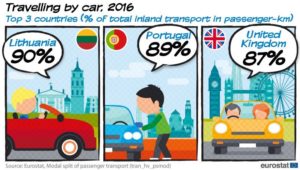
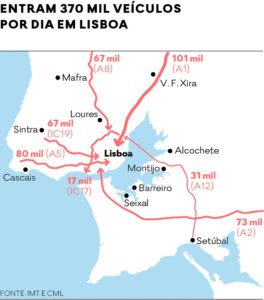
 These large numbers of automobiles not only provoke endless traffic jams in the center but also severe air pollution.
These large numbers of automobiles not only provoke endless traffic jams in the center but also severe air pollution.  The solution to reducing the use of cars seems straightforward: create alternatives! With this in mind, Fernando Medina, Lisbon’s mayor, advocates a radical reduction in the cost of public transport (metro, bus), extend the number of bus lanes in the metropole and –by means of state funding – enable a free bus
The solution to reducing the use of cars seems straightforward: create alternatives! With this in mind, Fernando Medina, Lisbon’s mayor, advocates a radical reduction in the cost of public transport (metro, bus), extend the number of bus lanes in the metropole and –by means of state funding – enable a free bus  But the government should do much more. Only 15% of public transport in Portugal is subsidized, compared to 50% in the EU. Moreover,
But the government should do much more. Only 15% of public transport in Portugal is subsidized, compared to 50% in the EU. Moreover, 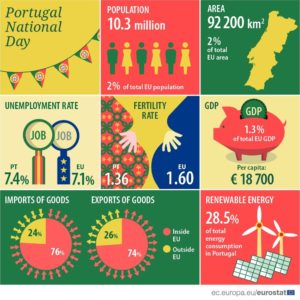 If you are what you eat (drink, smoke) or love (males, females, yourself), then countries certainly aren’t the same. There are after all innumerous appetites and lifestyles. For example, health club membership is twice as high in Spain and three times higher in Denmark.
If you are what you eat (drink, smoke) or love (males, females, yourself), then countries certainly aren’t the same. There are after all innumerous appetites and lifestyles. For example, health club membership is twice as high in Spain and three times higher in Denmark. Portuguese people take 4744 steps a day, far less than the Chinese in Hong Kong or even their Spanish neighbours. Two-thirds are not physically
Portuguese people take 4744 steps a day, far less than the Chinese in Hong Kong or even their Spanish neighbours. Two-thirds are not physically  Portuguese adore cars – one in every two owns one – and use them every day. For everything: commuting, shopping, and outings. Unfortunately, these motorists hardly ever use public transport and are keen to make
Portuguese adore cars – one in every two owns one – and use them every day. For everything: commuting, shopping, and outings. Unfortunately, these motorists hardly ever use public transport and are keen to make 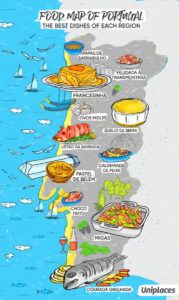 Apparently not. Portuguese people love their culture and are– besides Fado, Football, and Fatima – fond of grilled sardines, Pessoa, Saramago, sunny weather and popular saints. They also
Apparently not. Portuguese people love their culture and are– besides Fado, Football, and Fatima – fond of grilled sardines, Pessoa, Saramago, sunny weather and popular saints. They also  The most stunning, however – at least according to the Observer – are the eyes of their men. Wherever you are in the world, you should look at their
The most stunning, however – at least according to the Observer – are the eyes of their men. Wherever you are in the world, you should look at their 
 Popular pork
Popular pork  In ancient Egypt, the pig was considered sacred and offered to the Moon, the Greeks honoured the goddess Porca and the Romans feasted on roasted piglets with honey.
In ancient Egypt, the pig was considered sacred and offered to the Moon, the Greeks honoured the goddess Porca and the Romans feasted on roasted piglets with honey.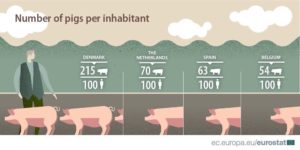 Pig production in Europe is concentrated in a few countries. Denmark has the highest number of pigs per inhabitant, Portugal ten times less.
Pig production in Europe is concentrated in a few countries. Denmark has the highest number of pigs per inhabitant, Portugal ten times less.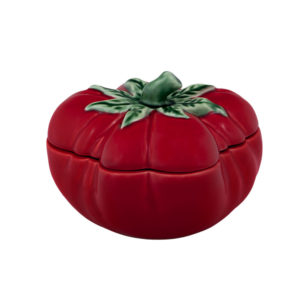 Who doesn’t remember the bright red tomato-shaped bowls, turmeric-coloured pumpkin tureens or pitch-black swallows on the wall in your grannies’ home?
Who doesn’t remember the bright red tomato-shaped bowls, turmeric-coloured pumpkin tureens or pitch-black swallows on the wall in your grannies’ home? He created the popular cartoon Zé Povinho – a character of social criticism – who became the symbol of the ordinary Portuguese man.
He created the popular cartoon Zé Povinho – a character of social criticism – who became the symbol of the ordinary Portuguese man.
 This year the company is opening its first shops abroad, in Paris and Madrid.
This year the company is opening its first shops abroad, in Paris and Madrid.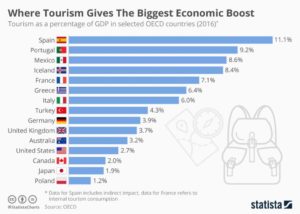
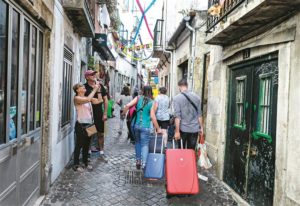
 The vast majority of the
The vast majority of the  Portuguese drink the most wine worldwide, on average 1 litre per person per week.
Portuguese drink the most wine worldwide, on average 1 litre per person per week.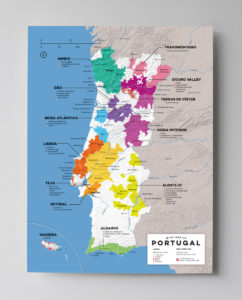 Portugal’s wine culture developed in relative isolation for more than 2000 years. Many grape varieties – there are over 250 indigenous ones – do not grow elsewhere in the world.
Portugal’s wine culture developed in relative isolation for more than 2000 years. Many grape varieties – there are over 250 indigenous ones – do not grow elsewhere in the world. ‘To state that wine causes cancer is simply untrue’, says Georg Sandeman, chairman of the Portuguese Wine and Spirits Association (ACIBEV). ‘Northern countries want to impose their culture on us. In the north of Europe, people use to drink a lot in short periods of time (‘binge drinking’) and often without food. Here, wine is part of our culture, our gastronomy. Of course, excessive use should be reduced but not moderate consumption.’
‘To state that wine causes cancer is simply untrue’, says Georg Sandeman, chairman of the Portuguese Wine and Spirits Association (ACIBEV). ‘Northern countries want to impose their culture on us. In the north of Europe, people use to drink a lot in short periods of time (‘binge drinking’) and often without food. Here, wine is part of our culture, our gastronomy. Of course, excessive use should be reduced but not moderate consumption.’ The best advice, therefore, is to stick to the American Cancer Society’s
The best advice, therefore, is to stick to the American Cancer Society’s  Lisbon Airport is congested and overcrowded, a victim of a
Lisbon Airport is congested and overcrowded, a victim of a  Nevertheless, growth is skyrocketing and a further boost of 10 million passengers is expected over the next 5 years. The 75 years old airport certainly can’t cope, despite its clean appearance, tasty food, and nice shops.
Nevertheless, growth is skyrocketing and a further boost of 10 million passengers is expected over the next 5 years. The 75 years old airport certainly can’t cope, despite its clean appearance, tasty food, and nice shops. The ecological movement
The ecological movement